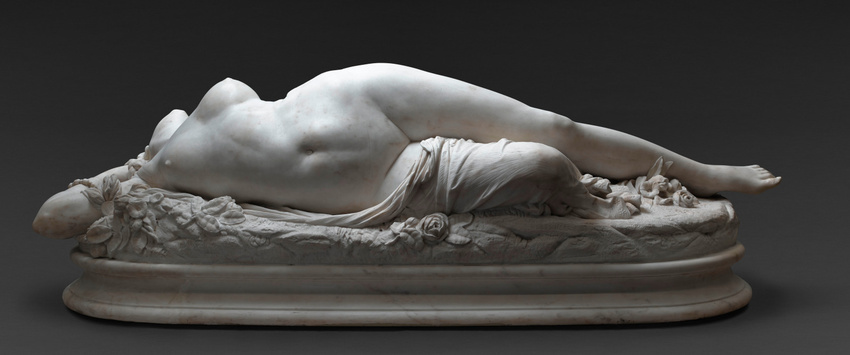This statue, along with Thomas Couture’s painting The Romans of the Decadence, was the cynosure of the 1847 Salon, scandalising the public and the critics alike. Clésinger produced a suggestive image of a naked woman writhing from the pain of a bite inflicted by the symbolic snake twisted around her wrist. As the dimpled flesh at the top of her thighs reveals, he used a plaster cast moulded from life. His model was Baudelaire’s muse, Apollonie Sabatier (1822-1890), a Parisian beauty who held a salon in Paris and was familiarly known as “La Présidente”; in lending her body to Clésinger she brought him unhoped-for success.

The practice of moulding a sculpture directly from life was violently criticised in the 19th century, on the grounds that it induced laziness and lack of integrity in the artist. Clésinger kept up excellent relations with Théophile Gautier, who orchestrated the scandal. For Delacroix it was just a “sculpted daguerreotype.”

Yet the generous curves that offended visitors to the Salon with their realism were combined with more conventional elements: the less expressive idealised face and the ornate pedestal covered with flowers like a bronze clock, making Woman Bitten by a Snake a perfect example of eclecticism in sculpture. The motif of the abandoned body was frequently copied until the end of the century, as is shown by Schoenewerk’s sculpture, The Young Tarantine.
